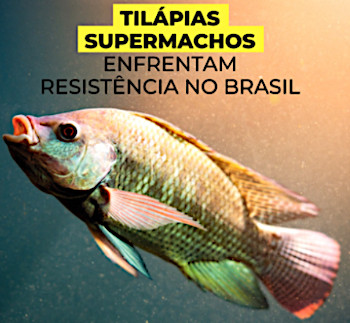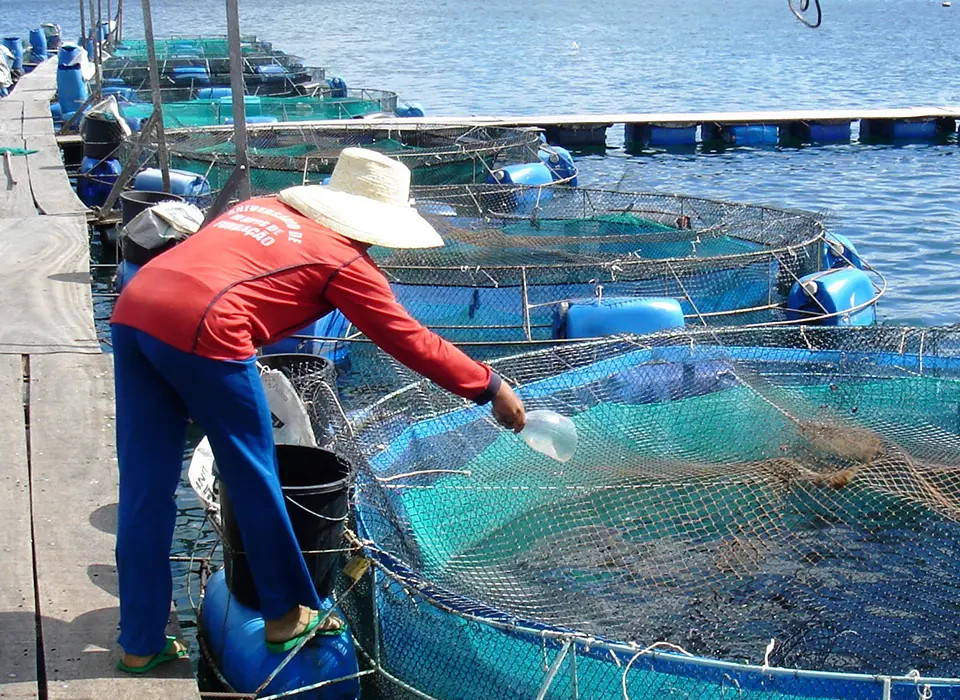|

Image: O Presente Rural / FIS
Despite Advantages, Implementation of Supermale Tilapia Faces Resistance in Brazil
 BRAZIL
BRAZIL
Tuesday, May 28, 2024, 01:00 (GMT + 9)
The following is an excerpt from an article published by O Presente Rural:
With faster growth rates and a high single-sex male production rate, which can reach 100%, super-male tilapia offer effective population control. Furthermore, production using this technique is hormone-free, contributing to the sustainability of aquaculture.

Source: GSA
When the intensification of tilapia production began in Brazil in the 1980s, unequal growth was observed between males and females, with a clear advantage for males. This is due, in part, to the fact that when the two sexes are together, during early reproduction, animals direct a significant portion of their metabolic energy toward the development of sperm and eggs, rather than toward growth. Furthermore, the energy expenditure associated with courtship behavior (male courtship) was considerable, which further compromised muscle growth. As a consequence, producers often had mixed lots, characterized by significant heterogeneity and low productivity. Given this scenario, the need to produce monosexual batches became evident.
 As a result, explains the master in Environmental Biology, doctor in Genetics and Molecular Biology and researcher at Embrapa Fisheries and Aquaculture, Eduardo Varela, producers produced unproductive batches. “In view of this scenario, the need to produce monosexual batches to optimize production and ensure more efficient and profitable breeding became evident”, he highlighted in his lecture on 'Supermale production technology for tilapiculture', held in mid-April during Inovameat , one of the main animal protein events in Paraná, held in Toledo, in the west of Paraná. As a result, explains the master in Environmental Biology, doctor in Genetics and Molecular Biology and researcher at Embrapa Fisheries and Aquaculture, Eduardo Varela, producers produced unproductive batches. “In view of this scenario, the need to produce monosexual batches to optimize production and ensure more efficient and profitable breeding became evident”, he highlighted in his lecture on 'Supermale production technology for tilapiculture', held in mid-April during Inovameat , one of the main animal protein events in Paraná, held in Toledo, in the west of Paraná.
Varela mentions that among the advantages of monosex technology are the higher average growth rate, due to the absence of energy diverted to gonad production and courtship behavior. Furthermore, there is a reduction in aggressive interactions, resulting in a more harmonious farming environment, and greater size uniformity at the time of harvesting, which reduces the need to classify fish and minimizes stress during farming. “In addition to this, monosex technology also prevents undesirable impacts of sexual maturation on the quality of the meat and the appearance of the fish”, highlights the expert.
Monosex production technologies
.jpg) <-- Source: O Presente Rural <-- Source: O Presente Rural
Among monosex production technologies, there are six distinct methods. The first is hormonal sexual reversal, which is commercially applicable and easy to perform. However, its disadvantages are significant, such as the intensive labor required, the relatively high cost, the potential for deterioration of water quality and animal welfare due to hormones, the need for a high level of control, and the possible environmental impacts resulting from the escape of organisms.
Another technique is interspecific hybridization, also commercially applicable, which shares the advantage of being easy to process. However, its disadvantages include ecological concerns due to leakage and difficulty in application under many production conditions.
The androgenesis method, although not commercially applicable, is suitable for species with homogametic males. However, its application is not easy and not always consistent, requiring vigilance in the selection and maintenance of stocks. [Continues...]
Source: O Presente Rural | Read the article in full by clicking the link here (only available in Portuguese)
editorial@seafood.media
www.seafood.media
|
|



